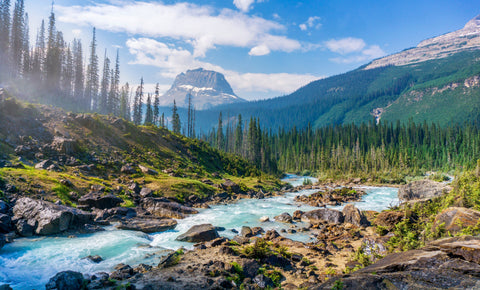6 Tips for a Smooth National Park Trip
Planning a trip to a National Park and wondering where to start? National Parks truly are some of the most magical places and make for amazing trips. However, there are certain things one needs to consider and prepare for when planning a trip to a National Park, especially if it’s a more popular destination. If you’ve ever shown up unprepared to a National Park, you know exactly how stressful it can be. Crowds. Lines of cars to every popular site. Nowhere to stay. Not having permits you didn’t even know you needed. And when you’re looking for a peaceful trip to experience nature, this can be quite frustrating. This article will provide you with the tips you need for a smooth trip to experience the beautiful nature found in our National Parks, minus the stress!

Plan ahead as much as possible
While there is a certain thrill in “winging it” and driving to a National Park last minute, there can also be a lot of frustration associated with doing things this way. That being said, if you do plan to go to a less popular park, this does become more of an option. Start by doing some research on your desired destination, and see what the typical crowds are during the time of year you’re looking to go. This should give you an idea as to how far in advance you need to start planning. If the park is more popular, planning at least six months in advance is advised. Many campsites, park entrance passes (not all parks do this but some do during summer months), and other permits get booked up very far in advance. Staying on top of these things will give you the best possible experience.
Factor in drive times
Many National Parks are incredibly spread out. So much so that driving from one popular part of the park to the other can take 4+ hours depending on the park. It’s important to do a little research on the different areas of the park you hope to enjoy. This will inform your itinerary, where you stay, what activities you pick, and mentally prepare you for how long you could end up spending in the car.

Learn about park entrance reservations
Ever since COVID started, certain more busy parks have been implementing permits just to enter the park. The amount is capped each day, to mitigate crowds during the popular seasons (typically summer). This won’t apply to you if you already have a hotel or camping reservation within the park. Keep in mind that these reservation windows are seasonal and can change based on the park at any time. As of January 2022, the following parks are still utilizing this system seasonally in 2022:
- Glacier National Park
- Zion National Park
- Shenandoah National Park
- Arches National Park
- Rocky Mountain National Park
- Haleakala National Park
- Acadia National Park
- Yosemite National Park
Stay up to date on park conditions
Leading up to your trip, we recommend staying in the know about road closures, park conditions, and any other information regarding the park you’re visiting that could affect your trip. This can be done best through the official National Park government site. Factor in things like wildfires, smoke, wild animal activity, snowfall causing roads to be closed, COVID restrictions, or predicted weather systems.
Have a rough itinerary
Due to how expansive these parks are, and how crowded popular trails tend to get, it’s best to show up with a game plan. If possible, plan to do the most popular hikes/activities on weekdays, getting an early start in the morning or during off season. Factoring in the temperatures and windows of daylight is also crucial. For example, you wouldn’t want to start a strenuous hike in the Grand Canyon during late morning in July. Be smart and strategic with planning out your activities. Reading hike reviews or park forums can be hugely helpful as well. All of this being said, be somewhat flexible. Even with the most thorough planning, not everything will go according to plan on every trip. Having some backup plan activities is a good way to go!
Think through the logistics
There are a few details to consider in terms of logistics, such as:
- Whether or not a park shuttle is necessary or provided
- Which parts of the park are accessible by your own vehicle vs. which parts you must use the shuttle
- Shuttle hours of availability - particularly when the first and last ones of the day will be
- Keeping a park map with you at all times in case you get lost on a trail
- Wildlife you could expect to run into on trails and what to do in case that happens
- Where public restrooms and water fill ups are located nearest your upcoming activities
- If anything you're doing will require cash
- Food availability within the park vs how much you should bring for a full day of activities

Are you planning a National Park trip this year?

